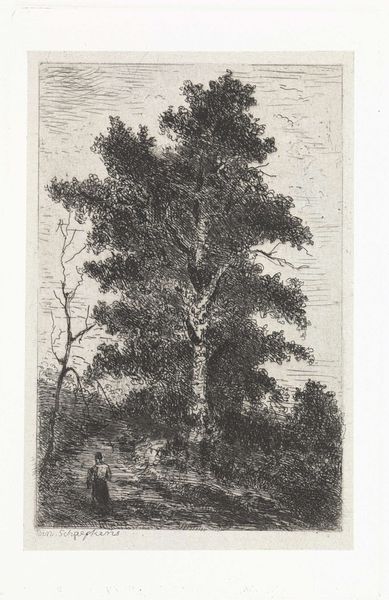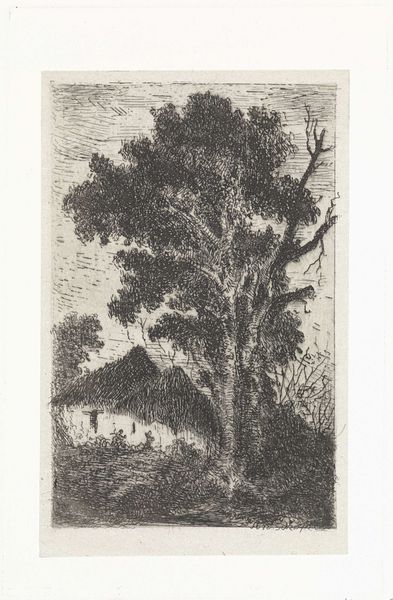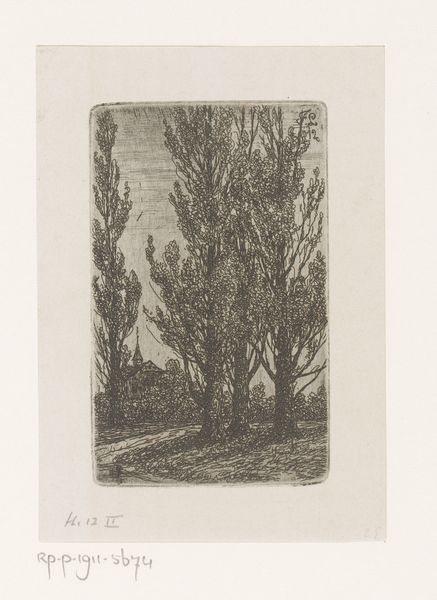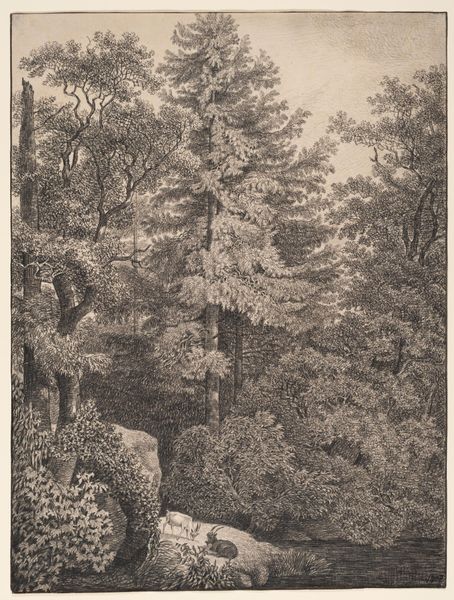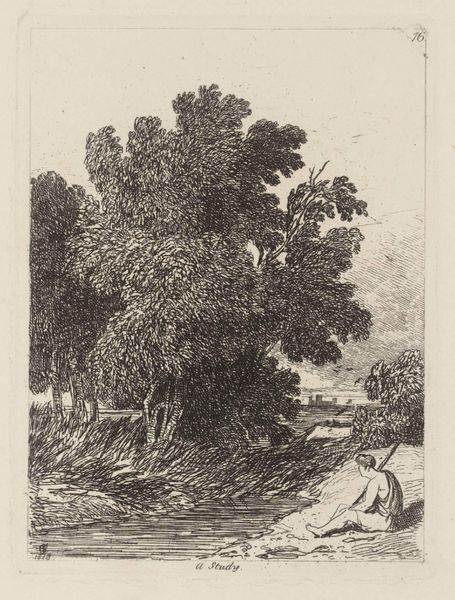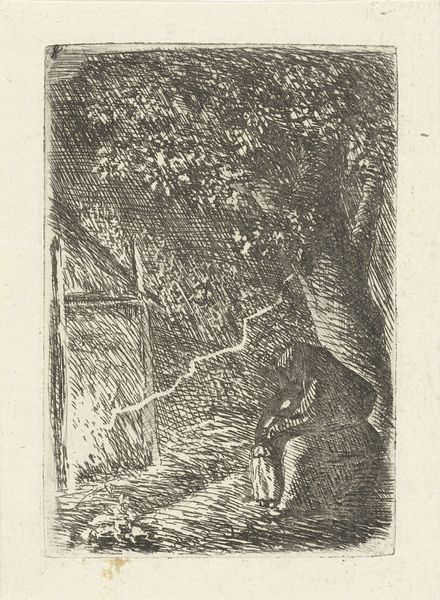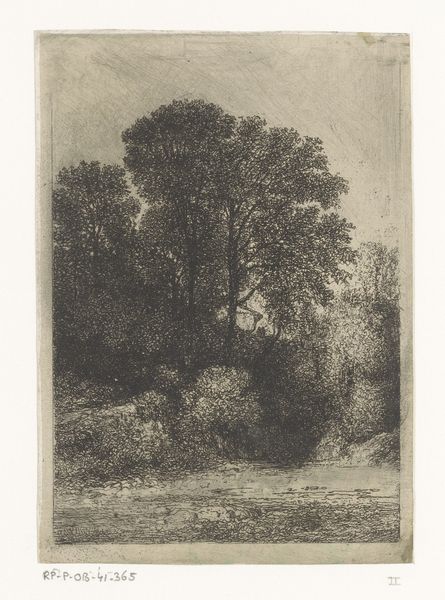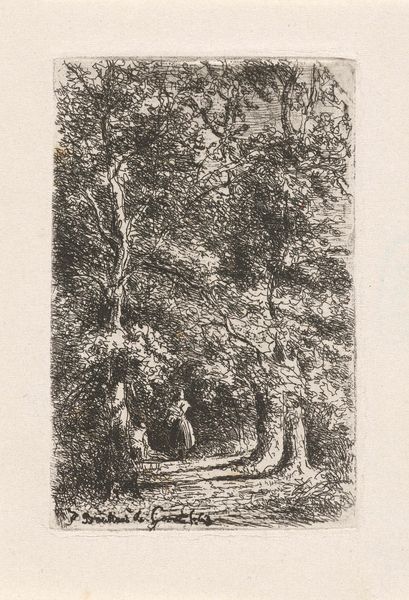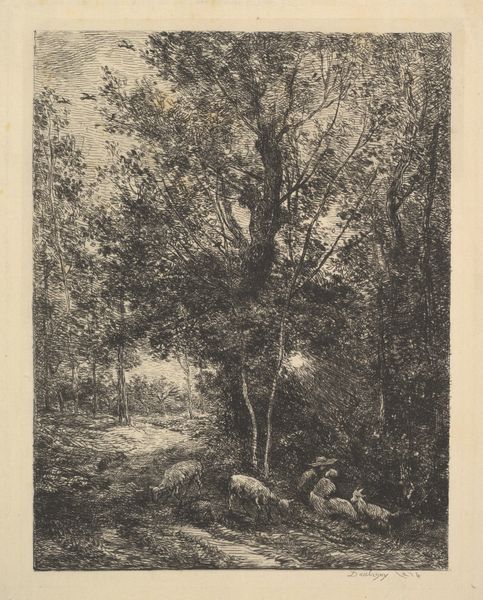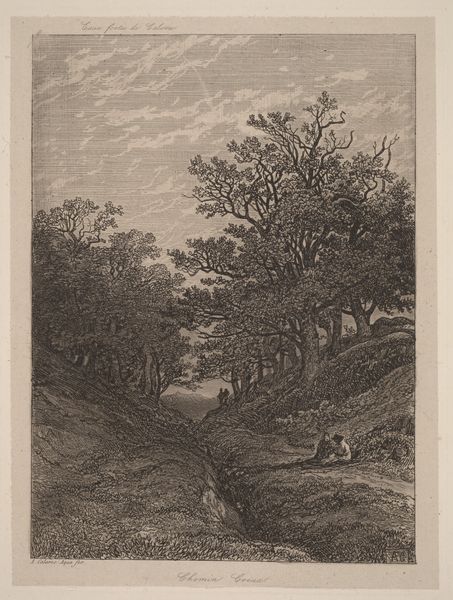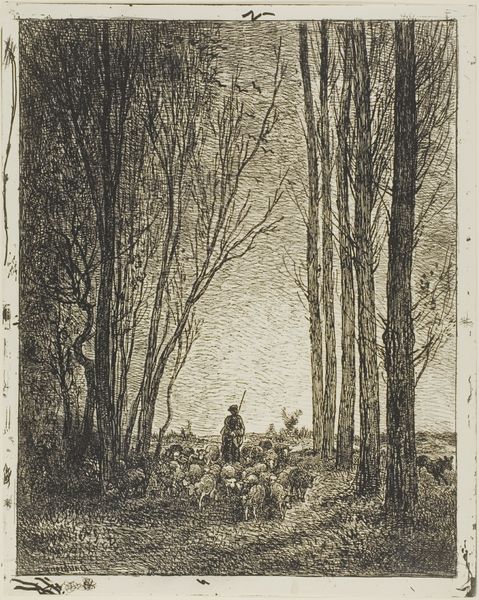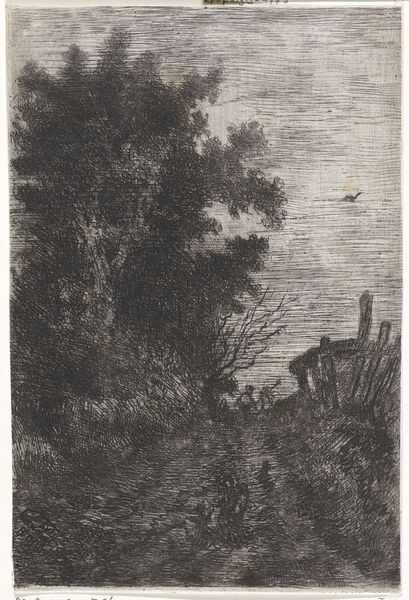
Dimensions: height 193 mm, width 124 mm
Copyright: Rijks Museum: Open Domain
Curator: Before us is "Landweg met wandelaars," or "Country Road with Walkers," an etching by Arnoud Schaepkens, created sometime between 1831 and 1888. Editor: Immediately striking. There’s a dense, almost claustrophobic feel despite it being a landscape. The light is quite subdued, creating a rather somber mood. Curator: Schaepkens was clearly interested in the effects achieved through etching; you can observe the labor-intensive, repetitive process used to create depth and shadow, built line by line, demanding both skill and physical endurance from the artist. We must consider what printmaking meant socially. Cheap dissemination, circulation amongst working folk… Editor: I'm captivated by the stark contrasts. Notice how he uses varied densities of lines, strategically placed, to differentiate the textures, such as foliage against the sky. Also the rhythmic, almost calligraphic quality of his linework; it imparts a visual energy. Curator: Considering it's a reproductive medium, it makes you think about the purpose of the print in Dutch society during this period. Was it for broader circulation, accessibility? Or was it still intended for the bourgeois classes? And what were the socio-economic conditions that influenced its making? The availability of materials, the marketplace... Editor: Setting aside those socio-economic implications for a moment, the formal composition alone draws my eye: the contrast of dense foreground with that paler, softly rendered sky... How the path leads into a somewhat obscured middle-ground—inviting a kind of visual, perhaps emotional, entry. Curator: Absolutely, the path and its human figures serve not only an aesthetic purpose, guiding the eye, but also as potent symbols of labor. It forces us to remember these anonymous individuals’ daily lives and the means through which landscape as property was defined, circulated, and experienced by its inhabitants. Editor: I appreciate your emphasis on the labor connected with its material reality. Yet, ultimately, the visual experience and internal formal relationships speak of something larger— a deep sensitivity to landscape's expressive power. Curator: Yes, we might never agree about the essence of an artwork; to think more deeply about that artist and the viewers he made that etching for provides a more complete insight. Editor: An intriguing work! It has rewarded careful study.
Comments
No comments
Be the first to comment and join the conversation on the ultimate creative platform.
